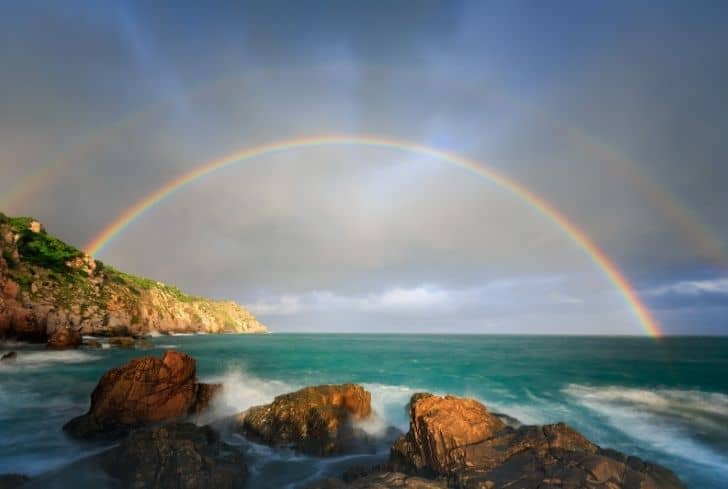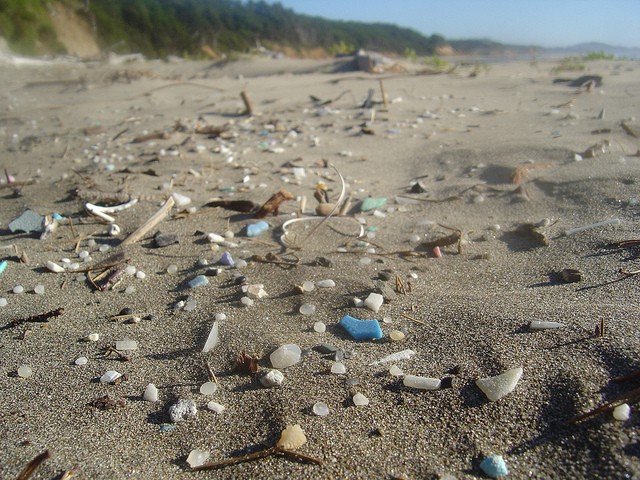Various Interesting Facts About the Atlantic Ocean

The Atlantic Ocean is a huge mass of water covering about 16.7-20 percent of the Earth and covers a total area of approximately 85,133,000 square kilometers. To get a clear idea about its size, it is important to note that it is slightly greater than half of the Pacific Ocean.
This ocean has an average depth of 3.339 meters with adjacent seas and its volume is 354’700,000 cubic kilometers, with its adjacent seas. Milwaukee Deep is the deepest part of the Atlantic, measuring no more and no less than 8.380 meters.
It bounded on the north by the Arctic Ocean, the Pacific Ocean to the southwest, the southeast Indian Ocean, and the Southern Ocean or Antarctic south. It connects to the Arctic Ocean through the Denmark Strait, Greenland Sea, the Norwegian Sea and the Barents Sea. As for land, it washes the shores of America in the west and Europe and Africa in the east. It is “home” of the Baltic Sea, the Black Sea, the Caribbean Sea, the Mediterranean Sea, the Gulf of Mexico and the Norwegian Sea.
Truly northern waters sink because they are colder, dense and saltier than normal as a result of being cooled by the currents of the Arctic. This initiates what is known as “thermohaline circulation” or “ocean conveyor belt”.
There are many interesting things and facts about this world’s giant. We chose the crucial and most important 20+ facts of this ocean.
Interesting Facts About the Atlantic Ocean
- The name ‘’Atlantic’’ comes from a Greek word ‘’ Atlantikos’’, meaning the large water area.
- 16- 20% of the Earth’s surface is covered by the Atlantic Ocean.
- Out of 5 oceans, Atlantic is the youngest. It was formed around 180 million years ago.
- The Atlantic Ocean dates back to the Jurassic Period, which was 199.6 to 145.5 million years ago.
- It was the first ocean ever crossed by a ship and airplane, before any other.
- Cunard Line was the first ship with the passengers that crossed the Atlantic Ocean back in 1850s.
- Amelia Earhart was the first woman ever flying above the Atlantic and any other ocean, back in 1928.
- The world’s largest island, Greenland, is located in the Atlantic Ocean.
- In comparison, the Atlantic Ocean’s size is almost 6.5 larger than United States.
- The strong winds and huge waves in the South Atlantic have a specific name – the ‘’Roaring Forties’’.
- Thanks to warm Atlantic Ocean’s Gulf Stream, the ports of Northern Europe mostly don’t have problems with freezing ice.
- The world’s second largest barrier reef is located in the Atlantic Ocean, more precisely – the Cancun Reef, located off the Mexico’s coast. The first and largest is the Great Barrier Reef, located off the Australian coast.
- A rare mountain range called Atlantic ridge is located underwater in the North Atlantic Ocean. It’s double Andes Mountain’s range size, counting around 10,000 miles from Iceland.
- The explorers have stated that the Atlantic Ocean’s coast of Southern Africa could contain diamonds.
- The mysterious myth of strange events and disappearance of different ships and airplanes, The Bermuda Triangle, is located in the Atlantic Ocean.
- The famous Titanic sank in 1912 in the Atlantic Ocean. It was believed to be an unsinkable ship, which turned to be false after it hit the iceberg on its way to America.
- A fish that was supposedly extinct for over 60 million years, the coelacanth, was caught alive back in 1938 in the waters of Atlantic Ocean.
- There are many creatures living in the Atlantic Ocean, including the humpback whale, manatee, starfish, sea lion, penguins, catfish, Atlantic ghost crab, the grey Atlantic seal, the green sea turtle, and numerous shark and fish species.
- Atlantic Ocean has natural wealth as well, such as oil, sand and gravel, fish, natural gas, placer deposits and previous stones.
- There are various species labelled as endangered, located in the Atlantic Ocean, such as manatee, whales, sea lions, seals, albatrosses, dolphins, auks, turtles, and petrels. Their gradual disappearance is the result of overfishing, accidental net fishing, and pollution.
- Around half of the world’s land area provides waters to the Atlantic Ocean. There are many rivers flowing into it.
- The scientist are using the sonar waves to map the Atlantic’s floor.
- During the winter, the storms of this ocean are reaching a surprisingly great size that frequently makes damage to the land.
Properties of the Atlantic Ocean
- The Atlantic is the saltiest ocean in the world, however, the surface salinity varies with latitude and season. Thus, the saltier waters are north latitude, 25 ° south in tropical areas of low rainfall and high evaporation. The lowest levels of salinity occur north of the Equator.
- Temperatures can vary depending on the latitude and season, but are about -2 ° C. Again, warmer temperatures were recorded north of the Equator, while the lowest are concentrated in the Polar Regions.
- Hurricanes are common between August and November, they tend to develop along the coasts of Africa and move westward into the Caribbean Sea.
- In the Denmark Strait and the coast of the Baltic Sea, the water is usually covered with a lot of ice between October and June in the waters of Denmark Strait and Baltic Sea.
It is the main artery between Europe and America and has been sailed since many centuries ago. Atlantic Ocean has a large vessel traffic. At the same time, it has important oil and natural gas in sedimentary rocks of the continental shelves and especially in the Caribbean Sea, the Gulf of Mexico and the North Sea.
Besides oil and gas, the Atlantic is exploited for fisheries, sand, gravel, polymetallic nodules and precious stones.
The Atlantic Ocean has the pollution caused by oil spills, sewage water with toxic substances and wasted materials. Some international treaties are concerned about this and have joined forces to reduce the effects, although they have already endangered many animal species.
History of the Atlantic Ocean
With historical certainty, it can only be said that the Phoenicians sailed southwards and northwards without departing far from the coasts of Europe and Africa. So did the Carthaginians. The Greeks did not provide any new knowledge about the ocean; poets believed that it was a wide river that surrounded the world, and the two sailors travelers of Marseilles, Pytheas, and Euthymenes, followed the course of the Phoenicians and first advanced towards the north, to England or Orcades where they heard of Tule an island, Iceland or Norway, and the second southwards to the Senegal river.
Note, however, that some illustrious Greeks such as Aristotle and Eratosthenes indicate that the Atlantic was the ocean that stretched between Spain and Africa on one hand and India on the other. The Romans distinguished themselves as sailors and therefore, there was nothing forward the exploration of the Atlantic. He reached middle age, and the Normans and Danes, marine and bold pirates sailed the Atlantic, and not only landed on the shores of England, France, and Spain, but led his ships westward and put their plants in Ireland, in Shetland, Hebrides, Orcades, Faroe islands and Iceland, and Greenland and discovered the Peoples of Europe N. America, then plowed in all directions and the North Atlantic.
In the thirteenth and fourteenth centuries, Arabs, Spaniards, Italians and French came to the Canaries, the Azores, Madera, perhaps more Atlantic interned; but when in the early fifteenth century the Portuguese started their voyages along the African coast, still he considered the Atlantic like a sea that led to dark regions, populated by monsters, or according to other traditions to the islands of San Brandam, Sanatanagio, etc.
During the fifteenth century Portuguese sailors were advancing across the Atlantic towards the south of Africa; in 1492 the Spanish ships passed through it for the first time since European vessels sailed so frequently and since the mid-sixteenth century the entire Atlantic, except occasional islet, was known and entered fully into the realm of navigation and geography.






